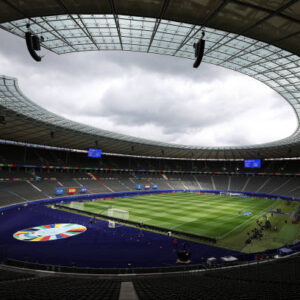Stadiums go beyond being mere locations for sports and entertainment; they are remarkable architectural wonders that represent human accomplishment and a sense of community. This article delves into the ten biggest stadiums globally, highlighting the impressive designs that host various events, ranging from sports to concerts and more.
1. Rungrado 1st of May Stadium(Pyongyang, North Korea)

The Rungrado 1st of May Stadium in North Korea is at the top of the list, with an impressive capacity of around 114,000. In addition to serving as the home ground for the North Korean national team, the stadium also hosts various non-football events throughout the year. Similar to the country itself, there is limited information available about the stadium, such as its construction costs.
2. Melbourne Cricket Ground(East Melbourne, Australia)

The Melbourne Cricket Ground, also known as the MCG, is a renowned sports venue that can accommodate up to 100,024 spectators. It is a versatile facility that hosts both cricket and football games. Throughout its history, the MCG has become highly regarded for hosting various significant events, including Australian Rules Football matches, Olympic events, and World Cup qualifiers.
3. Camp Nou(Barcelona, Spain)

Camp Nou is one of the largest stadiums globally and the largest in Spain, with a capacity of nearly 100,000. It has successfully hosted numerous major tournaments and games, including Champions League finals, World Cup matches, Summer Olympics, and European Nations’ Cup. Despite its impressive size and history, the stadium lacks a roof over most sections, making it one of the few top European stadiums without this feature.
The recent renovations and expansions have cost over €600 million, making it one of the most expensive renovation projects. However, the Barcelona board continues to plan for further expansion, with the latest project set to add even more seats and make Camp Nou the second largest football stadium in the world, surpassing the Melbourne Cricket Ground. The expansion is expected to be completed in 2024.
4. FNB Stadium (Johannesburg, South Africa)

The FNB Stadium, the biggest of its kind in Africa, has a capacity of up to 94,736 individuals. It is mainly used for rugby union and football matches. Due to its size, it can be quite overwhelming. Although it has been used for various events in the past, it is most famous for hosting the final match of the 2010 World Cup between Netherlands and Spain. Additionally, the FNB Stadium serves as the home ground for the South African national team and hosts the home games of the local team Kaizer Chiefs.
5. Rose Bowl (Pasadena, United States)

Although it was established in the 1920s, the Rose Bowl, which can accommodate up to 95,542 individuals, gained recognition in the football world when it hosted the World Cup matches in 1994. Since then, numerous teams have made use of this venue, with LA Galaxy being the most notable resident in recent times. A notable characteristic shared by the Rose Bowl and many other stadiums in the United States is the absence of a roof, which actually enhanced the breathtaking view during the World Cup 1994 final between Brazil and Italy.
6. Wembley Stadium (London, England)

Wembley, known for its capacity to accommodate up to 90,000 individuals, solidifies its reputation as a leading football venue. It serves as the home stadium for the England national team and is a prominent location for international matches. However, due to the rising costs of construction, the England FA has permitted games from various competitions to be held at Wembley. Consequently, the stadium now hosts matches from the League Cup, FA Cup, and several lower league tournaments. Additionally, Wembley is a popular destination for hosting concerts and other events.
7. Estadio Azteca (Mexico City, Mexico)

The Estadio Azteca is a famous sight in Mexico City, known for its capacity to hold up to 87,525 spectators and serving as the home stadium for the Mexican national team, Cruz Azul, and Club America. Its historical significance is largely attributed to hosting two World Cup finals in 1970 and 1986. Additionally, this stadium is renowned for being the site of the infamous ‘Hand of God’ goal by Diego Maradona during the 1986 World Cup match against England.
8. Bukit Jalil National Stadium (Kuala Lumpur, Malaysia)

The Malaysian national football team possesses one of the world’s biggest football stadiums. The Bukit Jalil National Stadium, constructed at a price of RM800 million, is an enormous structure capable of accommodating over 87,000 spectators. It stands as the largest stadium of its kind in Southeast Asia. Consequently, it is not unexpected that the stadium has been utilized for various events in addition to hosting matches for the Malaysian national team.
9. Borg El-Arab Stadium (Borg El Arab, Egypt)

This stadium is the second largest in Africa, with only the FNB Stadium having a greater total capacity. However, the Borg El-Arab Stadium in Egypt surpasses all others in the country with its comfortable capacity of 86,000. Unlike many similar stadiums, it has been equipped with air conditioning in multiple areas to effectively combat the extreme weather conditions in this region. The eingineers have made a significant effort to ensure that the stadium provides a wide range of amenities, including two sub-stadiums that can accommodate 2000 spectators each.
10. Signal Iduna Park (Dortmund, Germany)

Signal Iduna Park, the home of Borussia Dortmund, is a renowned stadium in Germany with a capacity of 81,365 people. The proximity of the stands to the pitch creates a daunting atmosphere for both visiting teams and fans. Additionally, Signal Iduna Park boasts the largest free-standing stand in Europe, capable of accommodating 25,000 spectators. This stand is famously known as the ‘Yellow Wall’.
These ten largest stadiums around the globe are more than just mere arenas; they serve as a testament to human creativity, love for sports, and the capacity to unite people. These stadiums are where aspirations come true, records are shattered, and indelible memories are created. They stand as symbols of the influence of sports and the collective moments that bind us together.




